How to Extend Eyelashes?
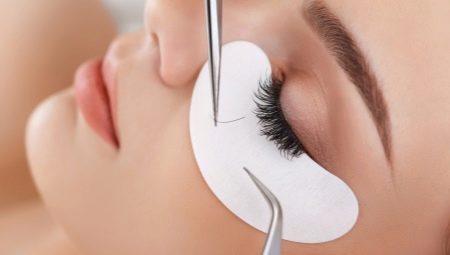
Today eyelash extension is one of the most popular procedures in the beauty industry. More and more girls want to become owners of a charming and attractive look. Along with the number of those who want to have long luxurious eyelashes, the number of those who want to learn how to grow on their own is growing. Meanwhile, this is a complex and painstaking procedure, during the implementation of which you can encounter many nuances.
For high-quality build-up, you will need not only the necessary knowledge, but also constant practice, which will help you become a real master of your craft.
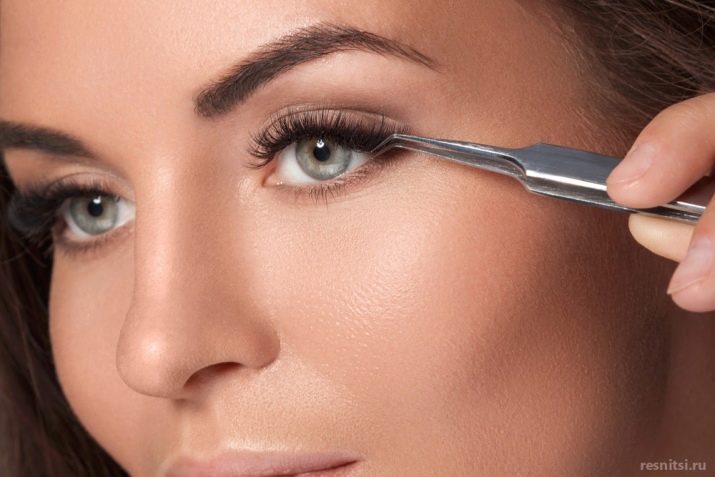


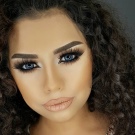


Execution techniques
Currently, there are all kinds and technologies of eyelash extension. Depending on the individual features of the face, you can choose the appropriate technique. Their description will help the master navigate in the choice from the variety that the beauty sphere offers to masters and their clients. The simplest is to divide the techniques into eyelash and volumetric extensions.
Nevertheless, the field of beauty services does not stand still, and today it offers more extensive classifications of this procedure.
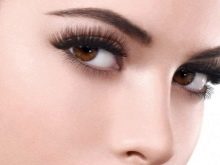
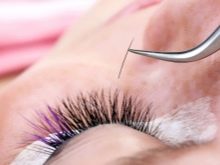

Japanese
This is an eyelash extension, which involves gluing one artificial eyelash to one natural one. Hair can be of any length, depending on what effect the master wants to achieve. Most often, with the Japanese technique, eyelashes are glued from long to short, from the outer corner of the eye to the inner one.The peculiarity of the technique consists in the use of "natural" materials: the masters extend their eyelashes from sable, mink or silk.
The technique that came from Asian masters is recognized by many as the most difficult and requiring special painstaking performance.
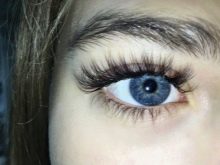

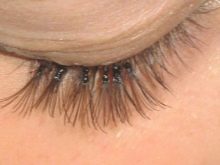
American
In fact, American technology does not differ from Japanese in anything other than materials. The eyelashes are made of rubber or silicone, which have their own advantages: they tolerate moisture and temperature changes.
After building on the American technique, you can safely go to the sauna, pool and even swim in sea water.
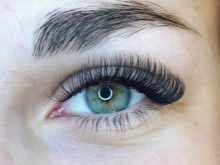
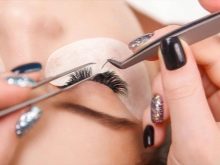

Indonesian
It is based on taking care of natural eyelashes. Extension using the Indonesian technique will provide not only an expressive look, but also care for natural hairs. The adhesive is equipped with a vitamin nutrition complex that strengthens the eyelashes.
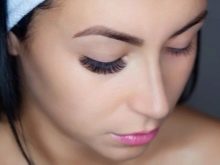

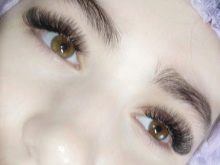
Volumetric
The opposite of classic eyelash extensions. During the procedure, several artificial ones are glued to one eyelash, due to which volumes from 2D and more are created. For those who are worried about the naturalness of their eyelashes, this technology will not work.
The voluminous build-up provides a very luxurious and expressive look. However, in order to ensure the naturalness of the eyelashes, the thinnest materials are used with such volumes.
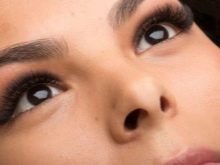
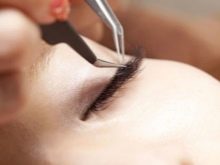
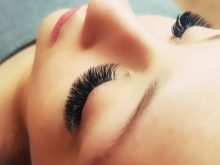
Beam
The fastest and longest lasting lash extension. It is ideal in cases where extensions are required "for one evening", when you want to look perfect for a particular event. Bundles are made of eyelashes that are interconnected: each bundle is glued at a distance from the other.
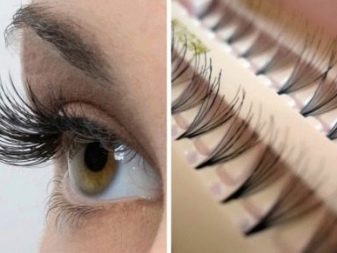

Different techniques are also divided according to the method of performing extensions: each master chooses the appropriate one independently.
Tiered
It definitely cannot be called suitable for everyday wear. Longline build-up is performed for all kinds of events, where it will be useful to draw attention to your luxurious look: it can be a holiday or a party, in the professional field - a photo session or a show.
Daily wearing of such eyelashes is also not recommended due to the fact that tiered extension is performed with the gluing of many additional hairs, the amount of which damages natural eyelashes.
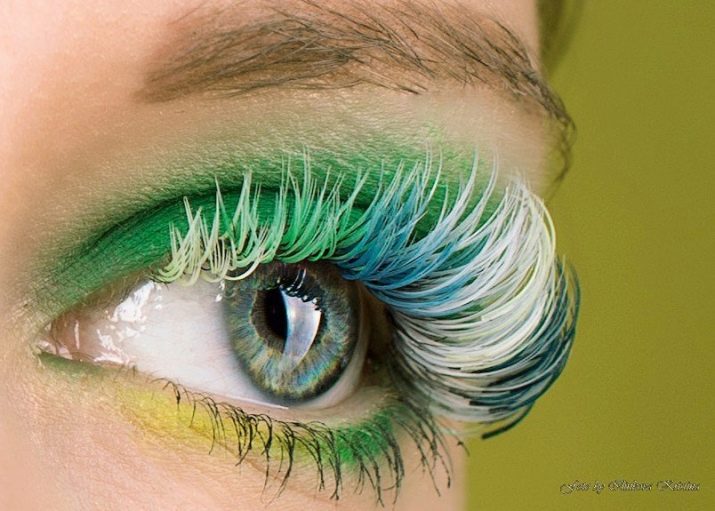
Wireframe
A technique in which an artificial hair is placed on a natural eyelash along its entire length. With wire-frame extensions, natural hairs are arranged in a special order: the upper row eyelashes go up, the middle row eyelashes go to the middle, and the lower ones go down. In this case, the lower hairs should cling to the middle ones, and they, in turn, to the upper ones.
When using this method, the effect of building up will last much longer than when choosing another technique for performing the procedure.
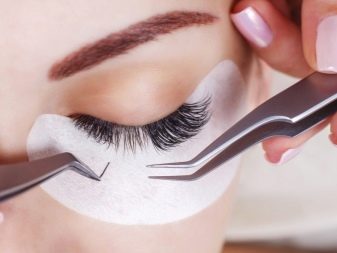
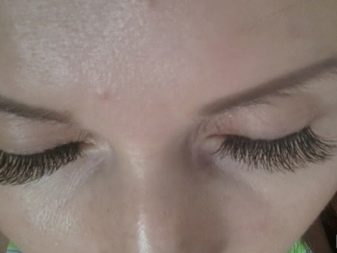
"Book" and "frame"
This is a technique common among craftsmen, which is distinguished by its convenience. False eyelashes are glued one after the other, which gives rise to an association with the pages of a book. This type of extension is sometimes called fan-shaped. "Frame" is a chaotic work of the master along the entire eyelash row. With this technique, the master can also alternately glue eyelashes from the inner and then from the outer corner of the eye so that the hairs connect approximately in the center of the eyelid.
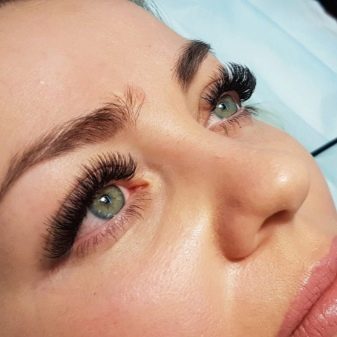

What materials are needed?
For professional build-up, materials are used, without which it is impossible to carry out the process of high-quality performance of this procedure. They are listed below.
- Patches. An obligatory component of any extension is the presence of pads that prevent the upper and lower cilia from sticking together.
Some craftsmen use special protective tapes, but the best option for these purposes is lint-free hydrogel patches.

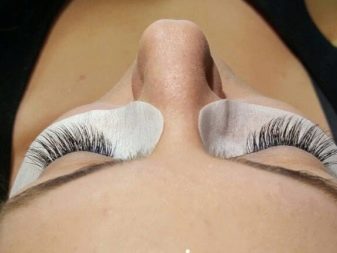
- Degreasing agent. It gently removes both decorative and care cosmetics, epithelial particles, grease and dust. Even if there is no decorative cosmetics on the eyelashes, a degreaser is an indispensable part of the extension procedure. If you do not cleanse the hairs, the wear of the eyelashes will be reduced.
Some novice beauty masters use a makeup remover instead of a degreaser and make a big mistake. Its use for cleansing hair is not recommended, because it is not intended for extension and does not give the desired effect.
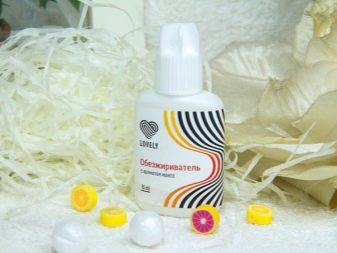
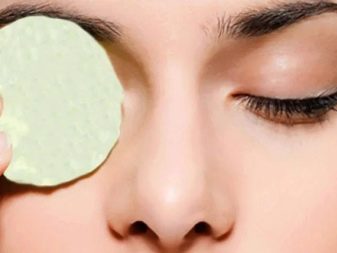
- Primer. After the hairs are defatted, a liquid substance is applied in order to remove the remaining grease, and also to provide a base for the application of the glue: the primer will speed up its drying and enhance its properties.

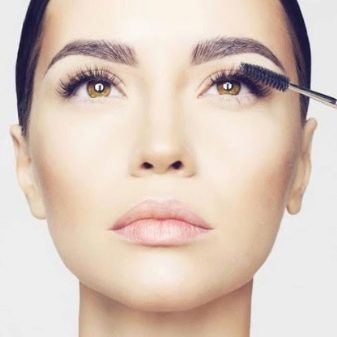
- Tweezers. For extension, the master will need two tweezers. The first is straight, separating the hairs and isolating those that serve as the basis for gluing synthetic eyelashes. The second is a beveled one that helps plant or remove artificial hairs. Professionals in their field recommend using a stainless steel tool.
Moreover, the tweezers should be light and lie well in the master's hand: if they are inconvenient to use, the master will get tired during the work, which will reduce the quality of the procedure.

- Eyelashes. An experienced professional has a wide range of eyelashes in different lengths, thicknesses, curves and colors. Before collecting your own arsenal of all kinds of synthetic eyelashes, a novice lashmaker needs to gain experience in building.


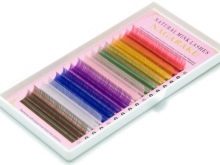
- Glue. When choosing an adhesive, the main criterion is the speed of drying. Experienced craftsmen choose quick-drying glue, while novice craftsmen are better off focusing on formulations with an average drying speed.
To avoid problems during the procedure, you should choose a hypoallergenic glue that does not contain formaldehyde.

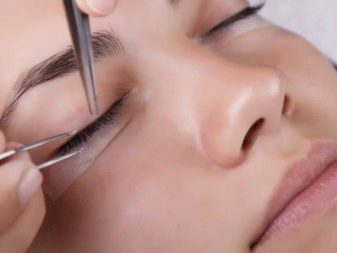
- Remover. A product that removes synthetic hairs. When choosing a remover, you should pay attention to substances that have a gel-like or creamy structure: they will not harm the mucous membrane and will not cause irritation. The liquid-based product is not intended to remove artificial hair, but is generally used to correct during the process or to clean the instruments.
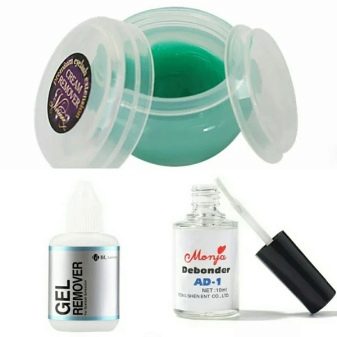

In order to properly extend eyelashes, you will need not only professional skills, but also the necessary tools and materials.
To ensure the desired result, as well as safety and comfort during the procedure, craftsmen should purchase products from manufacturers who have proven themselves well in the market for the field of beauty services.
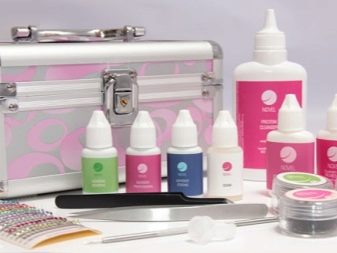
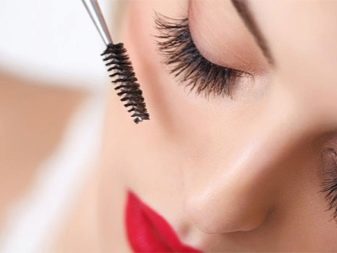
How to build your own eyelashes?
Sometimes you need to get attractive eyelashes here and now, but there is no opportunity to visit a master. Especially for such situations, many girls want to independently learn how to perform the extension procedure. This process is not difficult, but it takes patience and time. Moreover, unprofessional work can lead to irritation, allergies and loss of natural hair. Materials should be chosen depending on how long you expect to wear.
The optimal extension techniques for self-execution without the necessary experience are thinned techniques or incomplete extensions in the corners of the eyes.
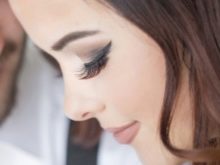
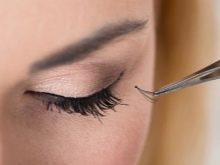
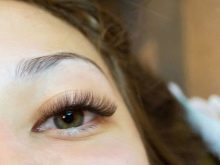
At home and in the absence of the necessary tools, you need to acquire at least a minimum that will help you complete the procedure. Tufted eyelashes are suitable as artificial hairs. You will also need adhesive, tweezers, and cotton pads. Before the procedure, it is necessary to cleanse the face of make-up, degrease the skin, collect the hair so that it does not interfere with the procedure. Building up at home takes place in three simple steps.
- Take an eyelash or a bunch with tweezers and blot the base with glue, then glue it to a natural eyelash. To avoid eye contact, use a minimum amount of adhesive.
- In order for a synthetic hair to firmly fix on a natural one, you need to hold it with your fingers for a while.
- Next, you need to alternately perform this action with each cilium or bundle. The process will be much faster if you use tufted hairs. For convenience, it is best to start from the inner corner of the eye and end with the outer corner, especially if a full extension is performed along the entire length of the ciliary row.
In order for the eyelashes to look natural and neat, symmetry must be observed during the procedure.
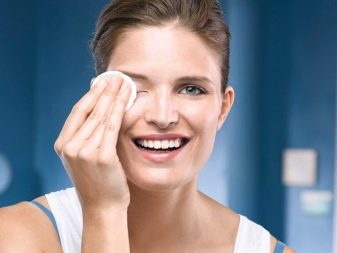
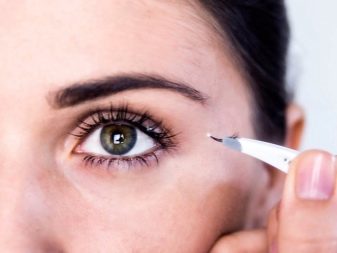
Stages of building in the salon
Salon extensions are significantly different from home extensions. In order to properly lengthen the eyelashes, the masters step by step follow each stage of the procedure.
- Before the procedure, it is necessary to prepare the eyelashes for its implementation, to clean them of makeup.
- Then it is necessary to isolate the lower lashes from the upper with patches to avoid gluing.
- Natural hairs also need to be degreased.
- Re-cleaning the hairs with a primer will better prepare them for the extension.
- After the eyelashes are ready for the procedure, it is necessary to prepare a tablet with eyelashes that will be used for a specific type of extension: it is selected in accordance with the characteristics of the appearance and individual preferences.
- The adhesive also needs to be prepared. Shake the glue thoroughly before the procedure.
- To protect the client from the occurrence of a reaction, a spray is used that neutralizes the evaporation of the adhesive.
- During the procedure, experienced craftsmen do not refuse an activator that improves the properties of the glue.
- Each lashmaker carries out the process of building up depending on what system he has developed for himself during his work. You can extend eyelashes first on one and then on the other eyelash row, or on both in the course of the work. There are basic schemes for performing the procedure: building with a "book", in which each cilium is glued one after another, or "cascade", when the order of gluing is more chaotic.
- After building up, the result of the work performed is checked.
- The area near the roots of the hairs is treated with a fixer.
- At the end of the procedure, the cilia must be combed.
- The final step is to remove the patches.
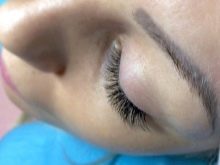
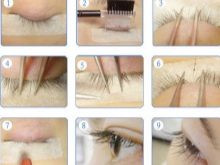
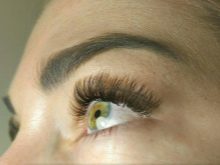
To do their job with high quality, the lashmaker needs to gradually build up eyelashes in compliance with all the recommendations. Professionally executed works make the look luxurious and charming.
Thickness selection
The most common sizes of eyelashes in terms of thickness are 0.07 and 0.10. Thinner material is used to achieve larger volumes.
The thinner the client's natural eyelashes, the thinner the artificial hairs should be.
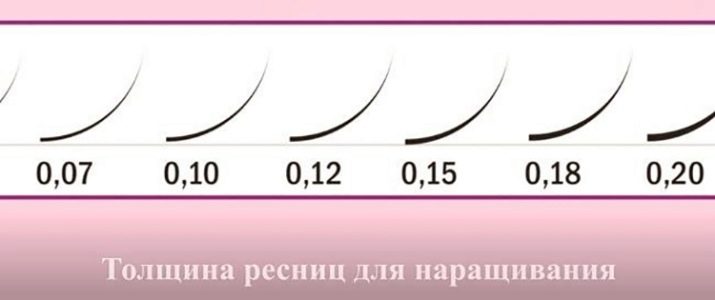
Choice of bend and length
The bend and length are selected depending on the parameters of the appearance and personal preferences of the client. To choose the right bend, you need to understand the types of the most common bends that beauty masters use today.
- Curl J completely mimics the curl of natural hair. It is suitable if you want to get a natural extension when working with long eyelashes.
- Curl B is used for a natural look and is ideal for classic extensions.
- The most common curl is C, which looks like an eyelash curled with a tool.
- Curl D - A deep curve that will work for straight eyelashes and transform a drooping eyelid.
- The CC Curve is a very dramatic and expressive variation with a more curved shape that reveals the look.
- The L curve is ideal for those with Asian eyes and overhanging eyelids.
The length of the eyelashes is usually between 4 and 20 mm. The optimal and natural option for extension is 12 mm.
It is worth noting that owners of large facial features can grow longer hairs, while girls with small and thin features are more suitable for natural eyelashes.
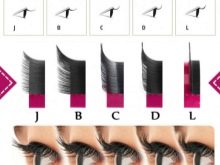


Extension procedure
The extension takes place in different ways, depending on what type and technology the master chooses in agreement with the client. In some cases, it takes no more than 1.5 hours, in some, the procedure may take more than 3 hours. It all depends on individual parameters and preferences, as well as on the technique that the lashmaker uses. For example, with manual technique, when the beams are formed independently, the procedure will take longer than working with ready-made beams.
The experience of a specialist is also an important factor: the work that a professional does in a couple of hours will take a newcomer much longer.
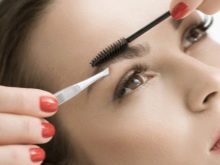
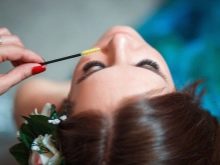
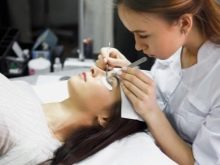
Features of gaze correction
Eyelash extensions will not only emphasize the advantages, but also correct imperfections by modeling the look. So, for deep-set eyes, bend L is suitable. For close-set eyes, the squirrel or fox effect is the best option: they are not suitable for wide-set eyes, for which the puppet effect would be the best option. For convex eyes, a classic extension with a natural curl is suitable. For Asian eyes or overhanging eyelids, the L bend would be ideal, and small eyes can be visually enlarged with medium-length eyelashes with C or D bends.
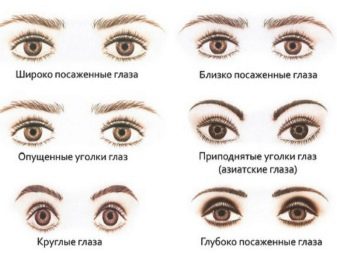
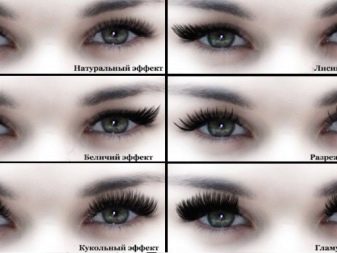
Can I dye my eyelashes before the procedure?
There are no contraindications to staining with paint before building up. Nevertheless, this should be done a day or two before the procedure so that the paint does not have a negative effect on the adhesive. If the eyelashes are naturally dark in color, then dyeing is not needed, because the natural color will perfectly harmonize with the color of the artificial hairs.
But dyeing eyelashes with mascara just before the procedure is strongly discouraged, as well as the use of other decorative cosmetics for the eyes.

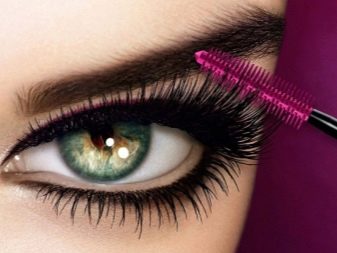
Advice
It is very important for novice craftsmen to perceive the experience that has appeared over the years of work of more experienced lashmakers in order to avoid annoying mistakes and learn how to do their job efficiently.
- To optimize the process, it is worth making your workplace comfortable and practical. The speed of work depends on how the foreman's workplace is organized.
- To work without gluing, choose the right adhesive. As soon as you feel that your hand is a little full, switch to a faster-drying adhesive.
- It is worth starting building up from difficult areas that cause more difficulties and take more time.
- Observe safety precautions. Choose only high-quality tools and materials so as not to harm your customers. Many foremen get carried away with conversations during the workflow, and this not only slows down the speed of work, but also leads to defects that will take a long time to fix. Moreover, facial expressions and gestures during the procedure can lead to chemical burns.
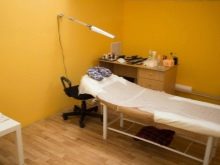
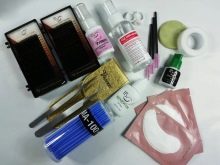
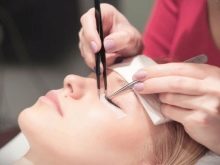
Review overview
Most novice masters leave a lot of comments on the network about the difficulties that have occurred in the learning process. Yes, eyelash extension is a complex, painstaking and patient process. It is for this reason that many girls write so often that they abandoned the idea of becoming a lashmaker. And this work is really not suitable for everyone.
But those who were able to master this profession without any problems and become professionals in their field can always count on constant income from the developing sphere and many satisfied clients.
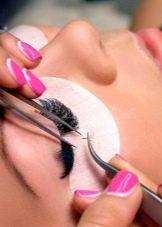



For information on how to extend eyelashes, see the next video.








